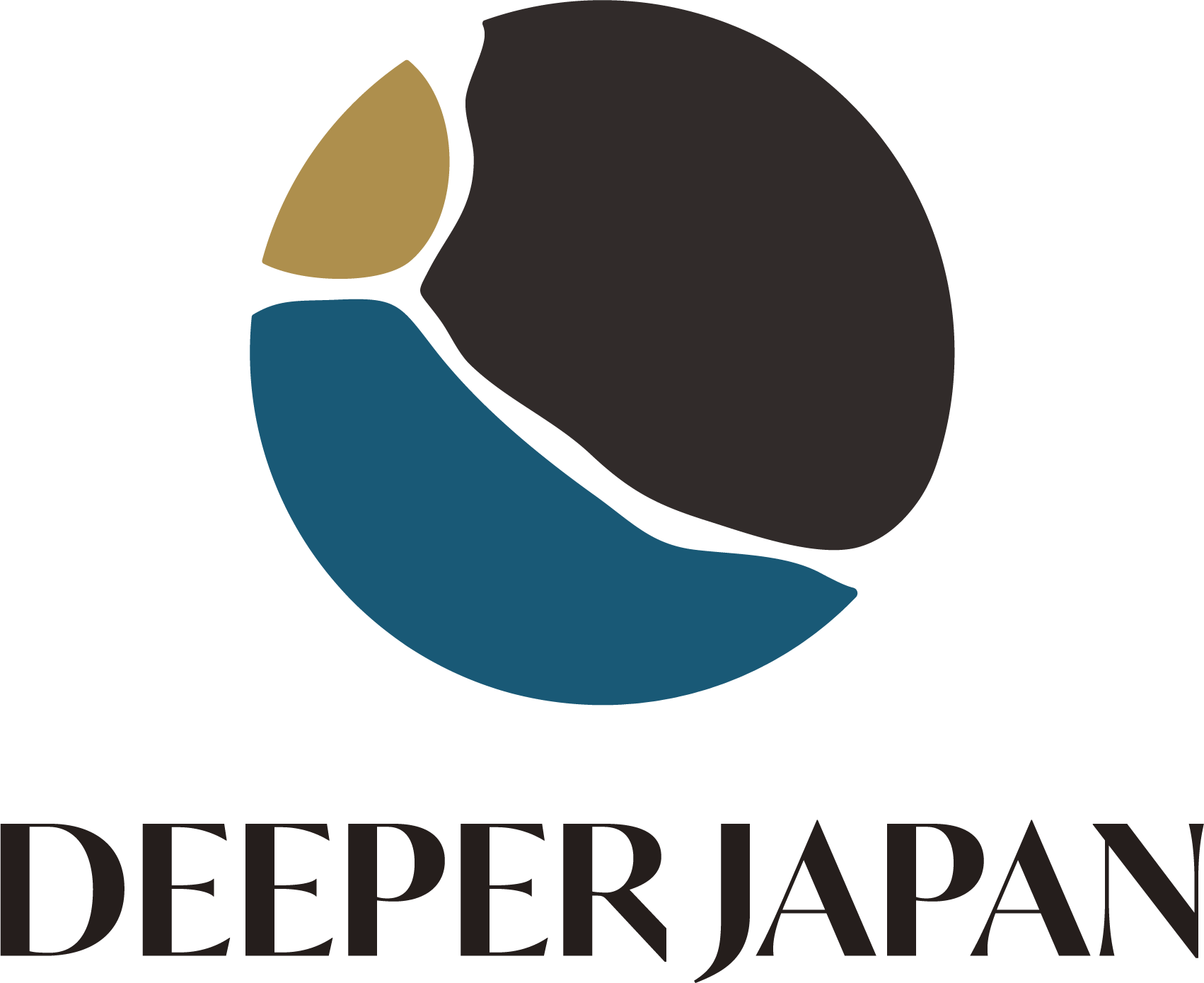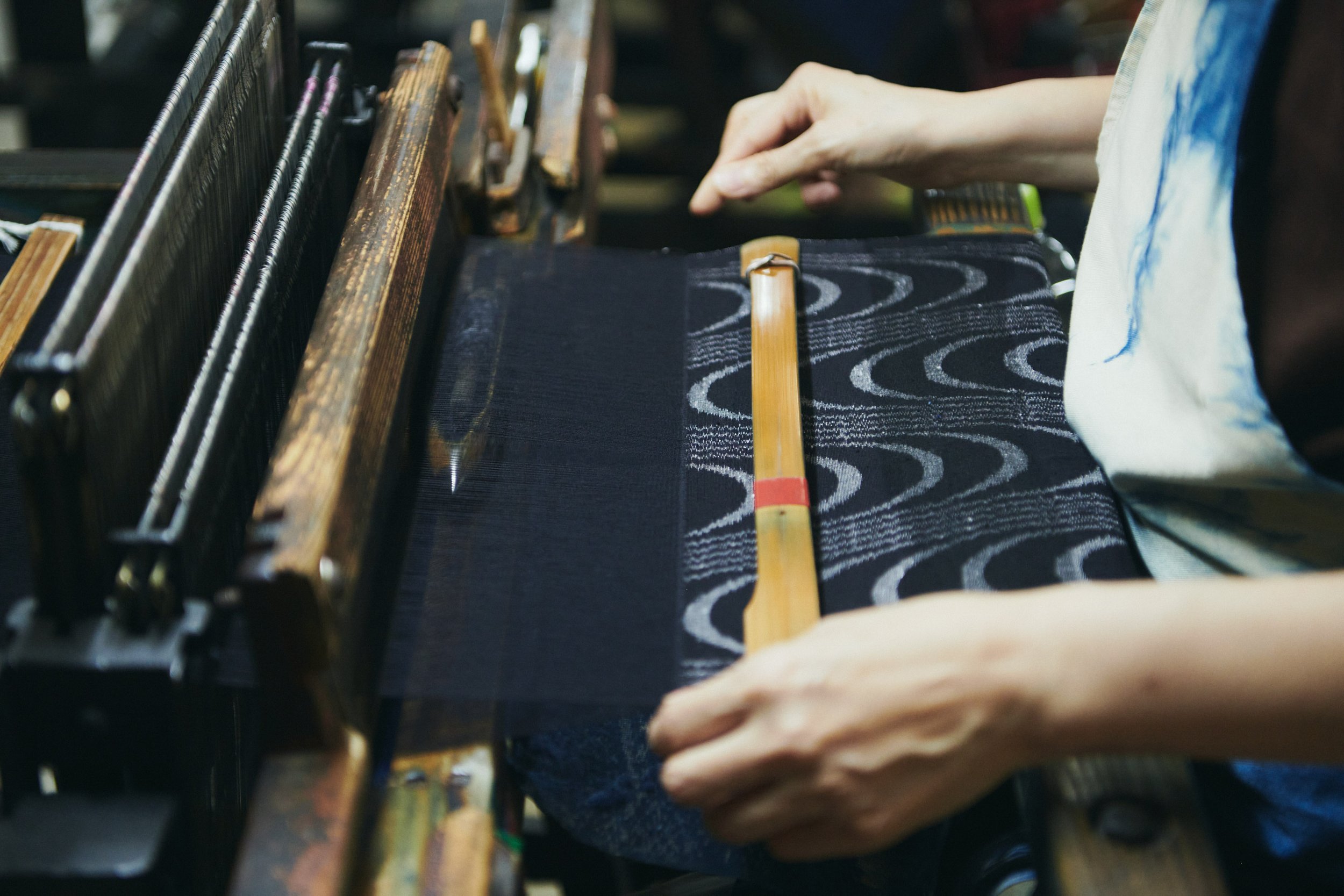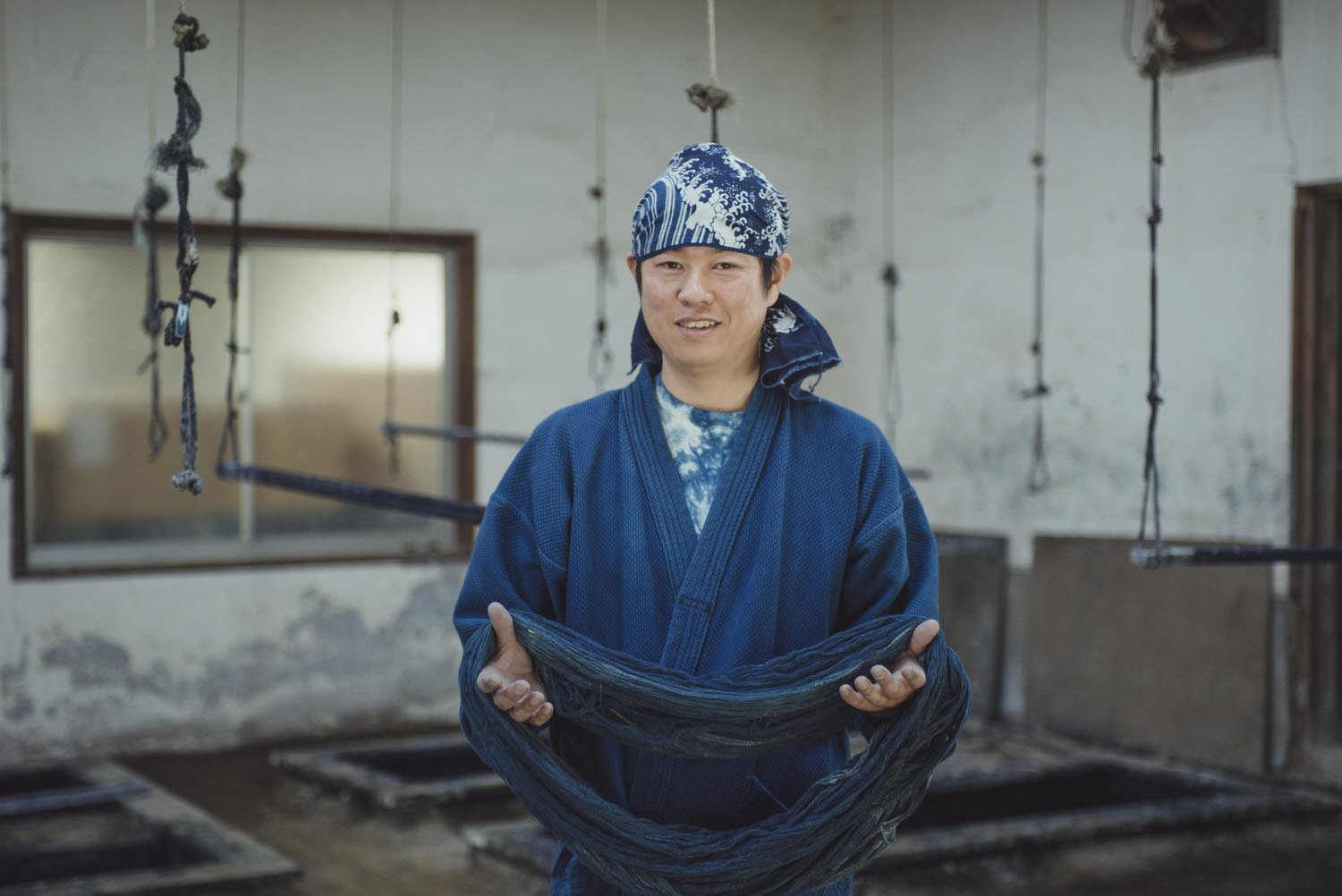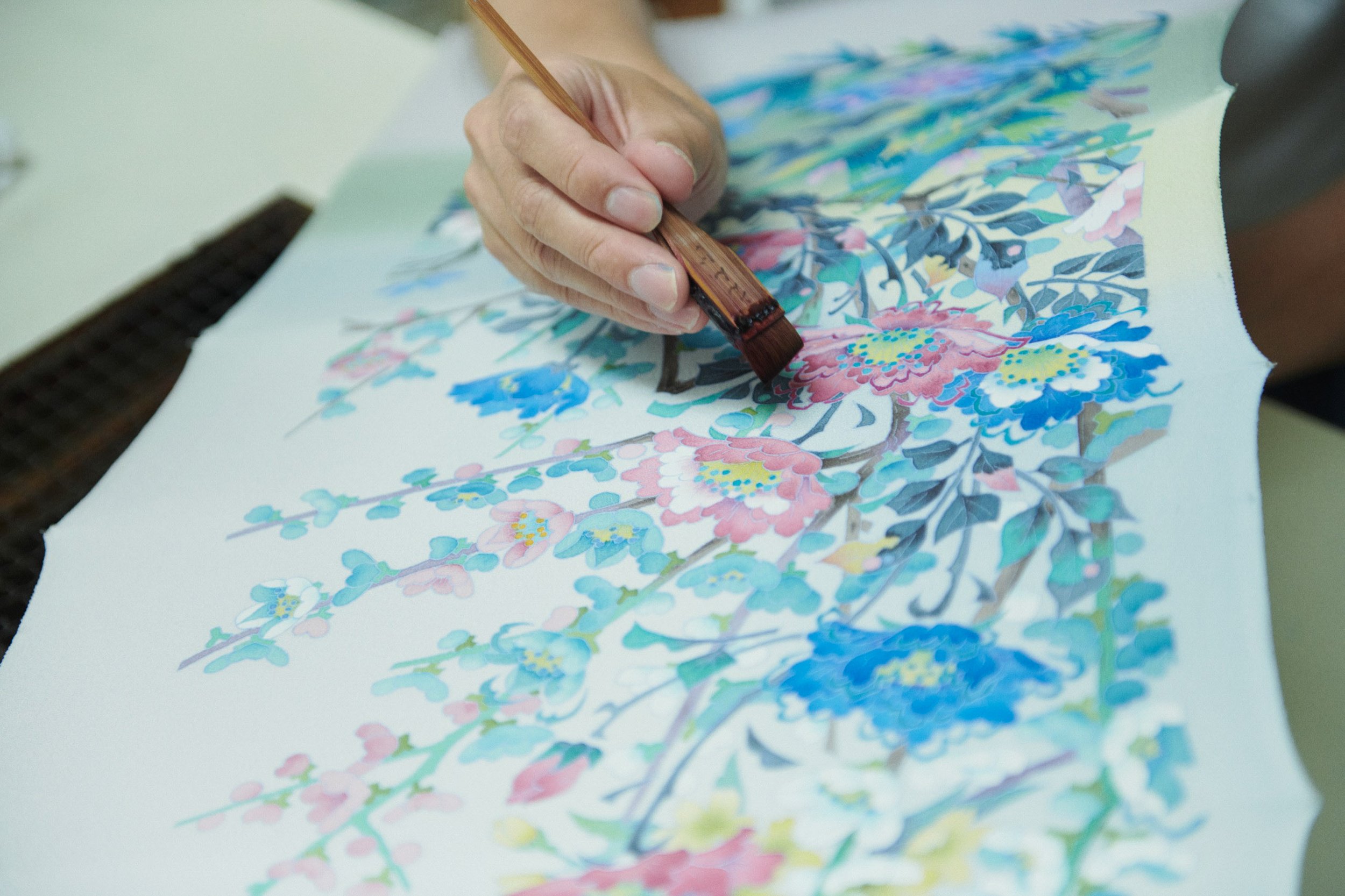The Art of Dyeing: Traditional Craft and Sustainable Fashion Technique
By Kim Kahan
For over a thousand years, Japan has been dyeing textiles. As a result of Japan’s geographic – and self-imposed – isolation, dyeing techniques developed as a distinctively Japanese practice, both in the transmission of the methods, passed down and refined across generations of craftspeople, and in the use of indigenous materials and dyes. With a unique care for even the most minute of details, mastering this traditional craft can take a lifetime of practice.
Imagine a family tree, across more than a thousand years, splitting into branches, then more branches, and even more: at the root lies aizome, meaning “indigo dyeing”, a technique practiced continually from the time of feudal Japan to the contemporary day. Now commonly employed by contemporary Japanese denim brands, aizome has served as the foundation for the craft of Japanese dyeing.
Growing out from this core method, there are countless schools, families, and companies that have each developed their own dyeing techniques, including honzome in Hokkaido, a process of resist-dyeing, and kyo-kanoko shibori, a traditional tie-dye technique from Kyoto. This breadth of methodical practice, paired with an inherent sustainability, has ensured that various Japanese dyeing techniques are known and emulated across the globe, enduring from ancient origins to the modern day.
In the third century BCE, trade with China brought the technique of silk farming to Japan, opening up a world of especially dye-receptive textiles to the archipelago. While there is some evidence of dyed Japanese textiles dating back to this time, the techniques that provided the foundation for the codification of a uniquely Japanese tradition originated in China. Primarily, it was craft specialists from the Chinese dynasties of Zui (581-618) and Tang (618-906) who were invited over to share their skills. Additionally, artisans from Korea frequented the island nation by imperial request to impart their knowledge and dyeing wisdom.
By the end of the Asuka period (552-646), Japan had come to be known as the “end of the Eastern Silk Road,” attracting artisans and traders from as far away as India and Persia. It was through this Silk Road exchange that the indigo plant persicaria tinctoria made its way to Japan. Due to the ease of cultivation and the hearty quality of the natural indigo dye sukumo, the crop spread across Japan. Known as “Japan blue,” this plant-based dye retains its magnificent blue hue after myriad washes and has since become synonymous with the country.
With dyeing techniques growing in popularity, more dyeing materials continued to be discovered, including natural compounds such as vermillion and even cinnamon. Accompanying the spread of indigo, a focus on locally available dyes became cemented into the craft’s practice. As the Muromachi period (1336-1392) drew to a close, European traders started to venture to Japan and bring with them vibrant fabrics and clothes, igniting a new era in Japanese fabric making.
Until the Edo period (1603-1867), when the capital moved from Kyoto to Edo (modern Tokyo) and the enjoyment of arts and popular culture flourished, the use of bright fabrics had been confined primarily to samurai and the aristocracy. Yet as the Edo period progressed, these luxury goods, as well as cultural activities such as autumn leaf-viewing, became increasingly more available to the common people. As access to these textiles changed, innovations in dyeing techniques also expanded.
The innovations of the Edo Period culminated in a class of dyeing methods known as “resist-dyeing.” The technique involves painting designs onto fabric with a non-permeable or “resist” paste, resulting in patterns created in the negative space. Various Japanese dyeing traditions employ this method, with different, locally available mediums used throughout the process. This method became popular for kosode, the precursor to kimono, as it allowed for more complex and detailed designs.
Perhaps most famous is yuzen, named for prominent artist Miyazaki Yūzensai who perfected the intricate patterns of the style. Drawn free-hand using a rice-based resist paste, images of nature and wildlife – pines and flowers to water and birds – were most common on yuzen-dyed fabrics. The elaborate garments became hugely popular across Japan and were sought out by collectors across Europe and the West.
Although yuzen and other resist-dye techniques, such as the aforementioned Hokkaido honzome, provided new ways to experiment with the art form, in the present day, these resist-dye techniques have taken a backseat to another traditional form of dyeing: Japanese tie-dye or shibori.
While there is some debate about when the method of tie-dyeing specifically originated in Japan, with some estimates ranging as far back as 1400 years ago, tie-dyeing is one of the oldest known dyeing techniques used on the archipelago. Known as shibori, from the Japanese verb meaning “to wring” or “to squeeze,” Japanese tie-dyeing became popular at a time when bright colors and vivid textures were out of reach for the common person. Through the various styles of shibori which emerged, people found ways to breathe life into old clothes and remake worn garments.
Falling under the umbrella of aizome, the most commonly known Japanese shibori uses indigo. However, it is important to note that indigo is not the only shibori color: while it is perhaps the most famous color used in Japanese dyeing, a wide breadth of naturally-sourced, local dyes are utilized, from purples to yellows and reds.
Since the technique has been around for such a long time, it has had ample chance to spread and develop across the country, with many towns claiming their own special tie-dyeing technique or pattern. Most of these areas are close to a river, as the ready availability of clear water made the technique open to anyone who wanted to try their hand at perfecting it.
Kanoko shibori is perhaps one of the most famous types of shibori technique, reaching its peak in the mid-Edo period, when it became a popular method to dye kimono. Named for its resemblance to the spots on a fawn’s back, kanoko shibori involves binding the cloth into intricate patterns, creating “eyes” in the fabric. The material is folded between fingers and then bound with thread. The binds and symmetry become more intricate the more experienced the artisan. One of the most famous types of kanoko shibori is kyo-kanoko shibori, which originated in Kyoto. Some pieces can take up to two years to complete and contain hundreds of thousands of eyes per length of fabric.
Other techniques involve the use of a tool – like clamps, pegs, or wooden blocks – to set in folds and patterns. Arashi shibori, from the city of Arimatsu, Nagoya, uses a pole to create a stormy pattern, like slashes of rain thrashing in the wind. Itajime shibori uses pleated fabric clamped between two surfaces to create a geometric pattern of repeated lines and shapes, often considered prototypical for shibori. Considering the multitude of dyes, patterns, and local traditions, these are but a few of many key tie-dye techniques that have endured across the centuries.
Recently, Japanese techniques in particular have been experiencing a resurgence in the fashion world. As the fashion industry attempts to move away from fast fashion and click-to-buy purchasing, the sustainable practices inherent to traditional aizome and shibori enable new ways to design and market clothing. Using natural, subtle colors to form complex and intricate patterns, these delicate techniques diverge from the conventionally bright, tie-dyed beach clothes and place an emphasis on materiality, sourcing, and handiwork.
New “slow-fashion” brands such as Shibori Threads hand-make each garment using the Japanese shibori technique. Japanese aizome brand Buaisou collaborated with Jimmy Choo, and designer Benoit recently commissioned the brand to dye his Nikes, turning them unbelievable shades of indigo. In fact, the natural dye was so impactful that Buaisou’s recent commission had commenters asking if the brilliant blue color captured in the product pictures was “real or AI.” At the core of this work lies the basis of the Japanese techniques in the use of natural dye and fabrics, rather than synthetic products.
As people look for new ways to design and recycle clothes, the time-honored craft also functions as a technique capable of rejuvenating outdated clothing into freshly designed fabric. This use and re-use of old t-shirts, sweatpants, bags, and more has been a large part of traditional craftwork, embedding sustainability as a core tenet of Japanese craft methods, through cutting down on clothing waste.
At over 1500 years old, the traditional Japanese dyeing techniques of aizome and shibori are tried and tested ways to breathe fresh inspiration into fabric, both new and old. The focus on intentional handiwork, iconic patterns and design, and natural, local dyes have brought the unique craft to a globalized stage. Further, as the topic of sustainability continues to remain nearly inescapable in today’s society – as awareness of the impact of global warming is more relevant than ever, Japanese dyeing provides an alternative path forward for companies and consumers. Through the Japanese methods of dyeing, meticulously perfected over generations of practice, teaching, and cultural exchange, the question of what to wear becomes not simply an ethical decision but one of style.
About the Author: In 2017 Kim came to Japan intending to stay for one year, and hasn't left since. She now writes about Japanese culture and its idiosyncrasies, more of which you can find on her website: www.kimjakahan.xyz








